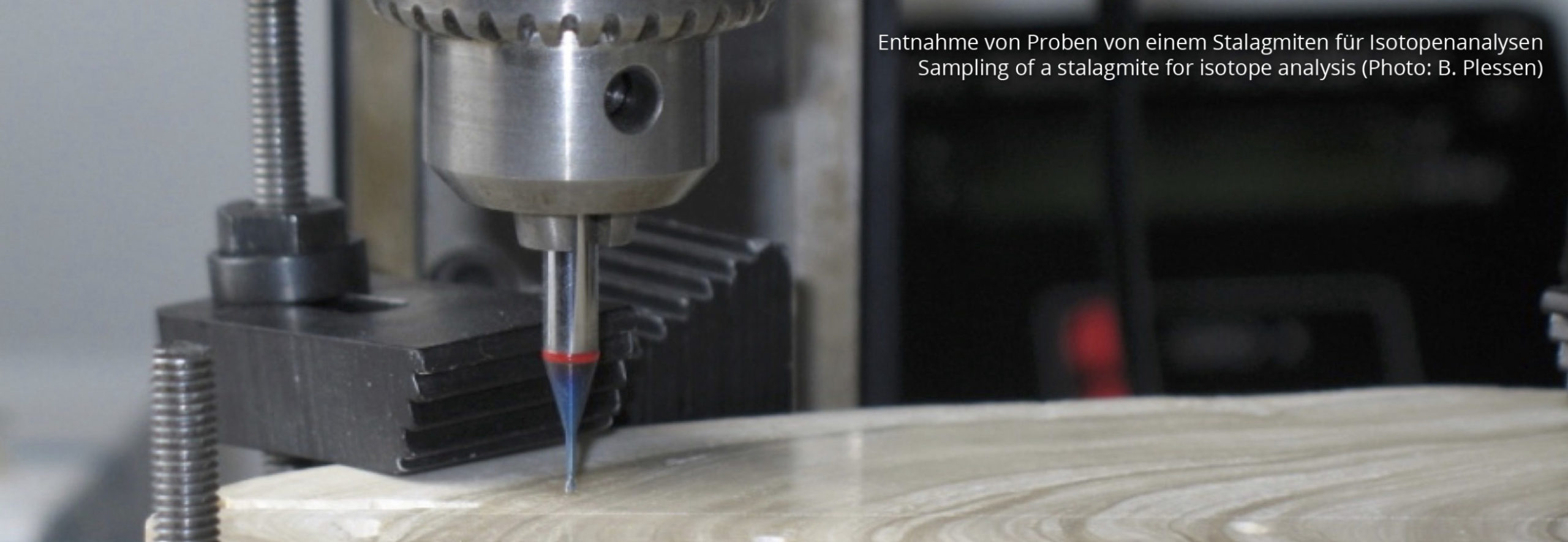Marwan, Norbert
Bleßberghöhle – Schatzkammer für die Wissenschaft Presentation
15.06.2022, (VdHK-Symposium: Wissenschaft unter Tage – Höhlenforschung im Dialog, Truckenthal (Germany)).
@misc{marwan2022,
title = {Bleßberghöhle – Schatzkammer für die Wissenschaft},
author = {Norbert Marwan},
editor = {VdHK-Symposium: Wissenschaft unter Tage – Höhlenforschung im Dialog, Truckenthal (Germany)},
year = {2022},
date = {2022-06-15},
urldate = {2022-06-15},
note = {VdHK-Symposium: Wissenschaft unter Tage – Höhlenforschung im Dialog, Truckenthal (Germany)},
keywords = {},
pubstate = {published},
tppubtype = {presentation}
}
Kaufmann, Georg; Romanov, Douchko
Modelling long-term and short-term evolution of karst in vicinity of tunnels Journal Article
In: Journal of Hydrology, vol. 581, pp. 124282, 2020.
@article{Kaufmann2020,
title = {Modelling long-term and short-term evolution of karst in vicinity of tunnels},
author = {Georg Kaufmann and Douchko Romanov},
doi = {10.1016/j.jhydrol.2019.124282},
year = {2020},
date = {2020-02-01},
journal = {Journal of Hydrology},
volume = {581},
pages = {124282},
abstract = {Tunnel construction offers unique insights into the interior structure of rock massifs. Soluble rocks encountered during tunnel construction, however, pose a substantial challenge. Especially classical karst rocks such as limestone, dolostone, gypsum, and anhydrite are unpredictable during tunnel excavation. The enlarged voids created by the long-term dissolution of the soluble rocks in contact with water pose risks because of possible uncontrollable water inflow and of instability of the encountered cave voids, which often requires expensive remediation measures. We model the long-term development of karst features and the evolution of phreatic and epi-phreatic caves below the Schalkau Plateau in the Triassic limestone with a numerical karst evolution model. With hydrological boundary conditions derived from local meteorological data and karst springs, and a simplified model of the local lithology, our model predicts the increase in secondary permeability in the karst aquifer. Enlarged fracture zones develop at locations, where cave systems have been explored. Thus our long-term evolution model can successfully predict karst features in the Schalkau Plateau. Applying the karst evolution model on a short-term period, we assess the effect of consolidation measures taken to stabilise the tunnel cross section in vicinity of the Bleßberg Cave and its longer-term stability. Our model results suggest that flow through the cave section beneath the tunnel, which has been filled with concrete and blocks, is blocked and that during flood events the impounded water will accelerate the development of by-passes around the artificial infill.},
keywords = {},
pubstate = {published},
tppubtype = {article}
}
Kaufmann, Georg; Romanov, Douchko
Karst and trains: The challenge of railway tunneling Proceedings Article
In: Geophysical Research Abstracts, pp. EGU2019-3554, 2019.
@inproceedings{kaufmann2019egu,
title = {Karst and trains: The challenge of railway tunneling},
author = {Georg Kaufmann and Douchko Romanov},
url = {https://bbh.pik-potsdam.de/wp-content/uploads/2021/04/EGU2019-3554.pdf},
year = {2019},
date = {2019-04-08},
booktitle = {Geophysical Research Abstracts},
volume = {21},
pages = {EGU2019-3554},
abstract = {Tunnel construction offers unique insights into the interior structure of landscapes. Soluble rocks encountered during tunnel construction, however, pose a substantial challenge. Especially classical karst rocks such as limestone, dolomite, gypsum, and above all anhydrite, are unpredictable during tunnel excavation. The enlarged voids created by the long-term dissolution of the soluble rocks in contact with water and the hydration of anhydrite with the sub-sequent precipitation of gypsum during the drilling pose risks because of possible uncontrollable water inflow and of instability of the encountered cave voids, which often requires expensive remediation measures.
We report on a high-speed railway tunnel in Germany along the line Berlin-Munich. The Blessberg-Tunnel, about 8,3 km long, mainly traverses Ordovician quarzites and shales, but along its southern end it crosses the Frankonian line, a major fault zone, with Triassic limestones on the southern part of the fault. Here, a substantial active water cave, the Blessberg Cave, has been encountered during tunnel construction.
We attempt to explain the karst features along the Frankonian line, the evolution of active water caves in the Triassic limestones south of the fault, and try to assess the effect of consolidation measures taken to stabilise the tunnel cross section in vicinity of the cave and its longer-term stability.},
keywords = {},
pubstate = {published},
tppubtype = {inproceedings}
}
We report on a high-speed railway tunnel in Germany along the line Berlin-Munich. The Blessberg-Tunnel, about 8,3 km long, mainly traverses Ordovician quarzites and shales, but along its southern end it crosses the Frankonian line, a major fault zone, with Triassic limestones on the southern part of the fault. Here, a substantial active water cave, the Blessberg Cave, has been encountered during tunnel construction.
We attempt to explain the karst features along the Frankonian line, the evolution of active water caves in the Triassic limestones south of the fault, and try to assess the effect of consolidation measures taken to stabilise the tunnel cross section in vicinity of the cave and its longer-term stability.
The strength and speed of karstification depends on various parameters, such as water balance or the existing rocks. A karstification model was used to model how karstification had developed in the area of the Schalkauer Platte and how it will develop in the future.
The model shows regional differences in the karstification potential. Especially in the areas where the model calculated increased karstification, there are, indeed, more caves, including the Blessberg cave. The modelling of future karst development, especially in the area of the cave part under the tunnel that was blocked during tunnel construction, showed a substantial increase in karstification in this area, i.e., a faster widening of fissures and crevices (in the time frame of 100 to 200 years).
